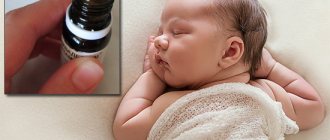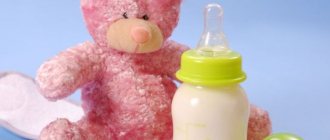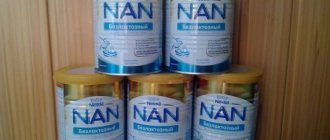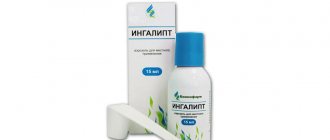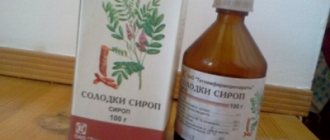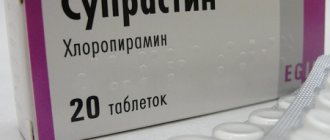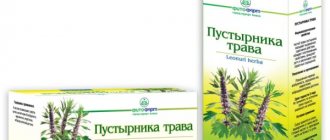Formulas for premature and low birth weight babies
Formulas for premature and low birth weight babies are placed in a separate group, since the need for nutrients and energy in such newborns is different compared to normal ones. Premature babies are understood to be children born at 28-37 completed weeks of pregnancy, weighing 1000-2500 g, and whose height is 34-45 cm.
Depending on the weight of the child, there are four degrees of prematurity, each of which is characterized by its own methods and feeding habits. Low birth weight babies are understood to be children born at term, but with a body weight of less than 2500 g. Breast milk will be the undisputed leader in health and nutritional value for such babies.
If breastfeeding is not possible, special formulas are used.
How long can you feed formula for premature babies?
The duration of use of nutrition for premature babies is determined by the amount of protein in artificial nutrition. In the event that the amount of protein does not exceed 2.2 g/100 ml of product, it can be used up to a body weight of 2500 g as the only mixture.
The calorie content of the diet should not exceed 130 kcal/kg. After reaching the specified weight, they begin to gradually give the usual one, but not completely displacing the specialized one, but maintaining it in the amount of 30% of the total amount of food for several more weeks or months.
This feature leads to the need to control the diet of an infant not only in terms of calories, but also in protein, so as not to overload the body. The duration of such a combined diet is determined by the degree of prematurity.
Thus, in the nutrition of very premature infants, the use of a specialized formula can be maintained up to 6-9 months of age in the amount of 1-2 feedings per day.
If the protein content is more than 2.2 g/100 ml of product, a specialized mixture is used until the weight reaches 1800 g. Next, the usual adapted one is introduced with complete replacement of the specialized one, since their simultaneous use leads to exceeding the amount of protein maximum permissible during the day.
The use of specialized formulas for premature infants up to 6 months in a small volume (1/3-1/4 daily volume) is especially important for very premature infants, as it allows them to provide them with all nutrients, accelerate growth and prevent the development of osteopenia (decreased bone density ).
List of formulas for premature babies weighing up to 1800 g
PreNAN Nutrilon Pre Enfamil Prematura Similac Special Care Frisopre Bellact Pre PreNAN 0 PreNAN FM85
List of formulas for premature babies weighing over 1800 g
Nutrilak Pre Nutrilon Pre 1 Similak Neoshur
Which formula is best for premature babies?
According to the degree of readiness for consumption, food for premature babies is divided into dry and liquid.
It is believed that liquid mixtures are the safest, since they are sterile and minimize the risk of bacterial microflora entering from the outside during the operations for their preparation.
Thus, from a microbiological safety point of view, it is better to use liquid mixtures. Otherwise, the selection of the product is individual in nature and is mainly determined by the degree of prematurity.
Source: https://topotushky.ru/pitanie/iskusstvennoe-vskarmlivanie/smesi-dlya-nedonoshennyx-i-malovesnyx-detej.html
Product reviews
The Nutrilon Premium mixture receives mixed reviews from both parents and pediatricians. Experts note that the product is well tolerated by most children and can really improve their well-being, but there are many situations when the mixture is simply not suitable for the child. Then the baby begins to experience even greater digestive disorders, and the expensive purchase has to be replaced with another formula.
As for parents, many note that when feeding this mixture, children develop a greenish tint to their stool, as well as a marshy smell. Interestingly, this is considered a variant of the norm and is associated with the special composition of the diet for the sensitive digestion of babies. The mixture itself also has a peculiar taste and smell, which not every child will like.
the best formulas for premature babies with names
Formula for premature babies is fed to babies born before the 37-38th week of pregnancy. They weigh less than 2500 g. These babies have reddish skin. Their sucking reflex is poorly developed. Their breathing is often difficult. These children lag behind in development compared to those born at term and having a normal weight.
Previously, premature babies were doomed. Now medicine has a range of measures to care for babies. With proper feeding, they quickly catch up with their peers. In later life, premature babies are no different from full-term babies.
Features of nutrition of premature babies
The best food for babies born prematurely is breast milk. It strengthens the immune system and promotes the proper colonization of bacteria in the gastrointestinal tract.
But there are times when it is impossible to get enough milk:
- mother has no lactation;
- the sucking reflex is weak (the baby falls asleep during feeding);
- the mother’s nipples are too rough or depressed (the child cannot hold them in his mouth).
In these cases, a composition is prescribed for premature babies. This is a therapeutic food. It is sold in pharmacies. You cannot prescribe formula to your baby on your own: the pediatrician takes into account the child’s developmental characteristics. The intervals between feeding babies are 3-3.5 hours. During this time, the food will be completely digested and the baby will become hungry.
The goal of therapeutic nutrition for babies born prematurely is to quickly gain muscle mass. A child who has grown to 3000 g is transferred to formulations for full-term children. The transition is being carried out gradually. The scheme is determined by the doctor.
Sometimes the pediatrician leaves 1-2 feedings per day with a medicinal mixture. This is due to the characteristics of the individual patient.
Formulas for premature and low birth weight babies, differences from standard formulas
Formulas for premature and low birth weight babies differ from standard starting formulas in their higher content of proteins, fats and carbohydrates, most microelements and vitamins and higher caloric content. They are designed to help your child gain weight quickly.
Most manufacturers designate such mixtures using the PRE signature. These are mixtures of PRE NAN, Nutrilon PRE, Friso PRE, Enfamil Prematura .
But PRE does not always mean a mixture for premature and low birth weight infants . For example, Hipp Pre formula is the first starting formula for feeding healthy children from birth.
The Abbott campaign has Similac Neosure and Similac Special Care mixtures for premature babies.
Nutrilon Pre 0, Friso Pre and Similac Special Care are intended for feeding premature babies weighing less than 1800 g, until they reach this weight.
Mixtures Pre NAN, Nutrilon Pre 1, Nutrilak Pre, Similak Neoshur are intended for feeding children weighing more than 1800 g, until they reach a body weight of 2500-3000 g.
Enfamil Prematura provides for its preparation in different dilutions, the standard one - with a calorie content of 67 cal per 100 ml of the mixture, as well as: 81 cal per 100 ml and 40 cal per 100 ml.
More details on the composition of formulas for premature and low birth weight babies can be found in the table
| Pre Nan | Nutri varnish Pre | Nutri womb Pre0 | Nutri womb Pre1 | Friso pre | Enfamil Prema tour | Similac special care | Similak Neoshur | Women skoe molo co | |
| Company | Nestlé | Nutri tech | Nutrition | Fries land | Mead Johnson | Abbot | — | ||
| A country | Switzerland _ | Russia | Holland | USA | — | ||||
| Protein, g | 2,3 | 2,0 | 2,6 | 2,0 | 2,2 | 2,4 | 2,2 | 1,9 | 0,8- 1,2 |
| Syv B/casein | 60/40 | 60/40 | 60/40 | 60/40 | 60/40 | 80/20 | |||
| Fats, g | 4,16 | 3,9 | 3,9 | 4,0 | 4,3 | 4,1 | 4,4 | 4 | 3,5 |
| SCT | 1,25 | 1,5 | 0,8 | 0,8 | + | 1,64 | + | + | — |
| Linoleic, g | 0,62 | 0,76 | 0,676 | 0,513 | 0,49 | 0,84 | 0,62 | 0,56 | + |
| Linolenic, g | 0,066 | 0,08 | 0,056 | 0,071 | 0,069 | 0,055 | 0,09 | 0,074 | + |
| Ratio | 9/1 | 9,5/1 | 12/1 | 7,2/1 | 7,1/1 | 11/1 | 7/1 | 8/1 | 5/1 |
| Arachidonic | + | + | 19 | 17 | 20 | + | 18 | + | + |
| Docosahexa enova | + | + | 15 | 13 | 20 | + | 12 | + | + |
| Ratio | 1/1 | 1,3 | 1,3 | 1/1 | 1/1 | 1,5 | 2/1-1/1 | ||
| Carbohydrates | 8.6 | 7,8 | 8,4 | 7,5 | 8,2 | 8,9 | 8,61 | 7,7 | 7,5 |
| Lactose | 5,6 | 5,0 | 5,6 | 5,9 | 5,9 | 3,56 | 3,7 | 3,7 | 7,5 |
| Maltodestrin | 3,0 | 2,8 | 2,0 | 0,8 | 1,4 | 5,3 | 4,9 | 4,0 | — |
| prebiotics | — | — | 0,8 | 0,8 | 0,9 | — | — | — | + |
| Calcium, mg | 99 | 85 | 100 | 87 | 100 | 97 | 146 | 78 | 34 |
| Phosphorus, mg | 54 | 48 | 56 | 47 | 55 | 53 | 73 | 46 | 14 |
| Ratio | 1,83 | 1,8 | 1,8 | 1,85 | 1,8 | 1,8 | 2,0 | 1,7 | 2,42 |
| Sodium, mg | 34 | 31 | 70 | 28 | 31 | 33 | 37 | 25 | 19,3 |
| Potassium, mg | 96 | 83 | 80 | 77 | 81 | 100 | 125 | 106 | 55 |
| Ratio | 2,9 | 2,7 | 1,14 | 3,8 | 2,6 | 3 | 3,4 | 4/1 | 2,84 |
| Magnesium, mg | 8,3 | 8,7 | 8 | 7 | 7,8 | 9,6 | 10,6 | 6,7 | 4 |
| Iron, mg | 1,2 | 0,9 | 1,6 | 1,2 | 0,78 | 1,4 | 1,5 | 1,3 | 0,16 |
| Zinc, mg | 1 | 0,8 | 1,1 | 0,9 | 0,78 | 0,8 | 1,2 | 0,9 | + |
| Iodine, mcg | 9,0 | 15 | 25 | 20 | 26 | 12 | 17 | 11,2 | + |
| Manganese, mcg | 6 | 4,5 | 10 | 7 | 40 | 41 | 14 | 7 | 0,7 |
| Copper, µg | 80 | 80 | 80 | 60 | 75 | 97 | 110 | 89 | 40 |
| Selenium, mcg | 1,6 | 1,4 | 4,5 | 1,7 | 1,6 | 1,42 | 1,8 | 1,6 | + |
| Vitamin A, mcg | 84 | 68 | 106 | 100 | 71 | 93 | 166 | 103 | 37 |
| Vitamin D, mcg | 2 | 1,5 | 3 | 1,7 | 2,5 | 1,3 | 1,2 | 1,3 | 0,12 |
| Vitamin E, mg | 1,3 | 1,5 | 3,5 | 2,1 | 4,1 | 20IU | 3,3 | 1,8 | 0,63 |
| Vitamin K1, mcg | 6,4 | 6 | 6 | 5,9 | 7,8 | 10,1 | 9,7 | 8,2 | + |
| Thiamine, mg B1 | 0,06 | 0,05 | 140 | 0,09 | 0,12 | 0,064 | 0,2 | 0,164 | 0,15 |
| Riboflavin, mgB2 | 0,07 | 0,1 | 200 | 0,15 | 0,175 | 0,13 | 0,5 | 0,112 | 0,038 |
| Vitamin B6, mg | 0,06 | 0,06 | 0,12 | 0,08 | 0,12 | 0,06 | 0,2 | 0,074 | 0,022 |
| Vitamin B12, mcg | 0,24 | 0,25 | 0,24 | 0,22 | 0,28 | 0,04 | 0,45 | 0,3 | 0,045 |
| Niacin, mg | 0,7 | 0,58 | 2,4 | 1,2 | 3,0 | 0,68 | 4,06 | 1,45 | + |
| Pantothenic acid, mg | 0,36 | 0,3 | 0,882 | 0,603 | 0,8 | 0,37 | 1,54 | 0,6 | + |
| Biotin, mcg | 1,8 | 2,6 | 3,5 | 3 | 3,3 | 2,5 | 30 | 6,7 | 1 |
| Folic acid, mcg | 56 | 45 | 35 | 20 | 48 | 29 | 30 | 19 | + |
| Vitamin C, mg | 13 | 11,9 | 17 | 9,3 | 19 | 16 | 30 | 11,2 | 4,24 |
| Choline, mg | 12 | 7,5 | 17 | 13 | 14 | + | 8,1 | 11,9 | + |
| Carnitine, mg | 1,7 | 1,4 | 1,8 | 0,9 | 3,0 | + | 3,4 | 4,0 | + |
| Inositol, mg | 5,2 | 4,1 | 24 | 3,8 | 36 | + | 3,4 | 4,5 | + |
| Taurine, mg | 6,4 | 5,1 | 5,5 | 4,9 | 5,9 | + | 5,3 | 5,0 | + |
| Energet valuable cal | 80 | 75 | 79 | 74 | 80 | 81 | 83 | 74 | 69 |
| Nucleotides, mg | — | + | 3,2 | 3,2 | 3,8 | — | 7,2 | 3,4 | + |
| Osmolar | 225 mOsm/l | 290 mOsm/l 299 mOsm/kg | 310 | 330 | 300 mOsm/l | 230 mOsm/l | 297 mOsm/kg | 260- 300 |
Squirrels
Formulas for premature and low birth weight babies contain 1.9 - 2.6 g of protein per 100 ml of finished formula, instead of 1.25 - 1.5 g of protein. Which are contained in standard starting mixtures .
The Nan Pre mixture does not contain regular proteins (whey and casein), but partially hydrolyzed whey protein and partially hydrolyzed milk.
Therefore, the composition of the mixture does not indicate the ratio of whey proteins to casein. Partially hydrolyzed protein is easier to digest and absorb. This mixture is hypoallergenic.
And can be used to feed children at risk of food allergies.
All other mixtures in this group contain regular whey proteins and casein in a ratio of 60:40 (as in human milk) and are not hypoallergenic . The ratio of whey proteins and casein is not indicated on the packaging of the Similak Neoshur mixture.
Fats
In formulas for premature and low birth weight babies, the fat content is increased to 3.9-4.3 g per 100 ml, instead of 3.4-3.7 g, which is contained in 100 ml of a regular formula.
In order to reduce the load on the child’s immature digestive tract, part of the fats (from 20 to 40%) in formulas for premature babies are represented by medium-chain triglycerides, which are much easier to digest and absorb.
All mixtures in this group contain polyunsaturated fatty acids. Including arachidonic and docosohexaenoic acids, which are necessary for the development of the nervous system and vision.
Palm oil
In this group of mixtures, in addition to Similac, the Enfamil mixture does not contain palm oil.
Nan, Nutrilak and FrisoPre mixtures contain palm oil. And Nutrilon Pre mixtures contain beta palmitate or structured palm oil.
Carbohydrates
The total carbohydrate content in formulas for premature and low birth weight babies has been increased to 7.5-8.4 g per 10 ml of formula instead of 7-7.7 g in a regular formula . This is necessary in order to increase the calorie content of the mixture.
But, in premature and immature children, the activity of the lactase enzyme is often reduced - this is called transient lactase deficiency.
Therefore, in infant formulas, part of the carbohydrates are represented by maltodextrin, and the amount of lactose in them is reduced to 3.6-5.9 g per 100 ml of formula.
Calories
The calorie content of formulas for premature infants is 74-80 cal per 100 ml of formula versus 65-68 cal per 100 ml of standard formula.
Which is better Nan or Nutrilon - review of feeding mixtures
Finally, the event that you all were looking forward to happened in the family - the long-awaited baby was born. Grandparents vying with each other to give advice on care and feeding for the baby and the young mother. But sometimes an event occurs that ruins all plans and the words of the pediatrician sound like a sentence: “You don’t have enough milk, your baby is hungry.
We recommend that you purchase baby formula for feeding or complementary feeding.” There is nothing to do and so you send the young dad to the pharmacy with the responsible mission of purchasing your first mixture. The huge amount makes your eyes wide open, but you only want the best for your little one.
So which mixture should you choose? Today we will look at the two most popular options in our country.
As you were able to notice, this is Nan from Nestle and Nutrilon from Nutricia.
Composition Nan and Nutrilon
Both manufacturers write on their packs that breastfeeding is an advantage for your baby, but since you are already holding a jar of formula in your hands, now all that remains is to decide on the formula that is right for your baby.
There is one huge difference in these mixture samples, huge! The NAN mixture does not contain palm oil, which parents are so afraid of, but at the same time, Nutrilon manufacturers indicate on their packs the advantage of palm oil for feeding a baby; it is very easily absorbed in a child’s tummy.
The manufacturer tries to compensate for the presence of palm oil in the composition by containing fish oil in Nutrilon to prevent rickets. This is also the difference between the compositions between Nan and Nutrilon.
Both manufacturers contain prebiotics, lactic acids, vitamins and other “goodies” for your baby, which, as stated by the manufacturer, are the most adapted and close to breast milk.
Price for mixtures of manufacturers
The next thing we also pay attention to when choosing complementary foods for our children is, of course, the pricing policy. The price segment of these manufacturers is approximately in the same category.
Both manufacturers have in their arsenal different options for mixtures, from which, in their opinion, you will choose exactly what your baby needs.
Prices, of course, have a wide range for the premium and economy segments, in simple cardboard boxes. The price also depends on the composition of these very mixtures.
Both manufacturers offer both a mixture for the day and a nighttime so-called “fall asleep”, which, according to them, will give you a restful and satisfying night.
Is it possible to be allergic to the mixture?
Another point that is worth paying attention to, and which sometimes also frightens parents, is the terrible word for young fathers and mothers “ALLERGY”. You shouldn't be afraid of this. In the products of any manufacturer, you will be happy to be offered hypoallergenic options for mixtures, ranging from lactose-free to gluten-free mixtures.
And finally, let me bring to your attention that the product line of NAS and Nutrilon is not limited to just mixtures. The assortment is quite wide: baby cereals, purees, baby milk and other delicacies for your little ones.
The choice is yours, health for your baby and easy achievements in the difficult task of “complementary feeding”.
And finally, a few, as it is now fashionable to talk about “life hacks” about feeding a child with formula:
1. So, be patient and get started. You only need to prepare the mixture in a sterilized bottle; it’s better not to be lazy and boil the bottle and pacifier for a couple of minutes.
2. Well and tap water are NOT SUITABLE for preparing the mixture. It is best to buy bottled water, specially purified and prepared for feeding toddlers.
3. The mixture should be poured according to the instructions and it is advisable to adhere to the table on the packaging; you should not think that the more you add, the better and more nourished your baby will be. The tables were developed by specialists taking into account age requirements.
4. During feeding, do not leave the baby unattended. It is strictly forbidden to use a mixture that you prepared a long time ago or use it as a remnant of “unfinished mixture” for the next feeding. After feeding, hold your baby in a “column” position.
5. Watch the child’s reaction to this or that mixture, to see if there are any rashes or other “pleasant surprises.” And do not be lazy and consult with your pediatrician about the mixture you have chosen.
Well, that’s probably all you need to know about feeding your little one.
Source: https://community.akusherstvo.ru/articles/internet-magazin/chto-luchshe-nan-ili-nutrilon/
Application area
The Nutrilon Premium 1 mixture is intended for feeding children from birth to six months. It is used if there is a lack of breast milk or there is no possibility of breastfeeding.
Of course, the best food for babies of this age is breast milk. "Nutrilon 1 Premium" is used as its substitute. It takes into account the high needs of children and helps protect them from diseases. ImmunoFortis prebiotics are very close in composition to the prebiotics of mother's milk, which helps strengthen the immune system. Special fatty acids ARA and DHA have a positive effect on the development of the child’s intelligence and immunity.
Before preparing, you need to take the process of washing your hands and sterilizing the bottle and nipple seriously. Then boil the water and let it cool to a temperature of 40 °C. Find your parameters in the feeding table, and in accordance with its calculations, measure the exact amount and pour into the prepared dishes.
It is better not to reuse such water. When preparing the mixture, be sure to use a measuring spoon. To be as accurate as possible in your measurements, fill the measuring spoon without a slide. Add the exact amount of product to the water, since more or less of it can harm the child.
Then close the bottle and shake vigorously for several seconds until completely dissolved. Next, you should replace the lid on the pacifier. Be sure to check the temperature of the fluid on the inside of your wrist; it should not be higher than 37 °C. The prepared mixture is suitable for use within an hour.


